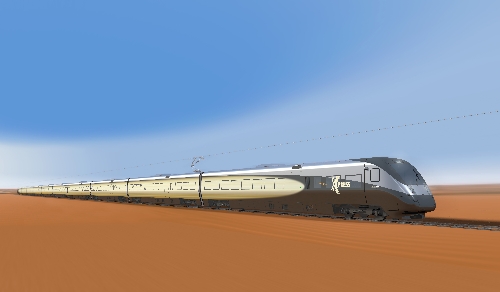Maglev technology makes sense for Las Vegas-L.A. train
The July 25 Review-Journal article "Comparing, contrasting Southern Nevada train proposals" is sprinkled with quotes from Anthony Perl, who is described as a California-based "think tank" consultant. Mr. Perl's comments critical of the maglev technology, however, come to us not from California, but Canada (look him up), the home of a 150 mph Bombardier train likely to be used by the DesertXpress to Victorville.
Mr. Perl's academic background is political science, not engineering. Perhaps this explains his wild assertion that maglev trains "would suck the windows out of buildings a half a block from the tracks." In fact, the Shanghai "Transrapid" maglev train has been safely operating in revenue service for more than six years, with not a single report of windows being sucked out of buildings.
The article also quotes a 2008 college graduate in architecture by the name of Yonah Freemark, in his mid-20s, who offers us his wisdom on what is or is not "politically problematic." Mr. Freemark would apparently have us believe that supporting a much slower train that runs only between Victorville and Las Vegas is less of a political liability (with "the administration") than a 300 mph train that services airports and the entire stretch of a federally designated high-speed rail corridor (i.e. Las Vegas to the Los Angeles area). Now, how does that logic work?
More importantly, how does his background give him the credibility and insight to have any impact on 90,000 jobs?
Getting back to Mr. Perl, his assertion that maglev trains need "massive amounts of energy" and are "far more costly than steel-wheel technology" is contradicted by actual experience, which shows that maglev uses approximately 30 percent less electricity at the same speed as steel-wheel. The life cycle and maintenance costs of maglev are also far less over the long term for the simple reason that the train is friction free and floats on a cushion of air while wrapping itself around a concrete and steel guideway, making derailment impossible.
Mr. Perl, the Canadian, would like those in Southern Nevada and California to cut off debate and end the competition now in favor of a prop plane that drops you off in the middle of the desert (Victorville) vs. a jet that takes you over the Cajon Pass and into the heart of the Southern California basin (Ontario and Anaheim). Why in the world would we do that?
What's being lost in the debate is that the DesertXpress, although privately owned, has now abandoned even the pretext of using all private money for construction. Its backers admit to looking for long-term federal loans to cover up to 80 percent of a $4 billion project, as reported in recent television and newspaper reports, including the national publication Engineering News Report and local Las Vegas Channel 5.
The state of Nevada, on the other hand, will own the maglev project, with all profits going back to the California-Nevada Super Speed Train Commission, a nonprofit state agency. The public-private partnership formed by this state with the American Magline Group in 1997 is the right business model for implementation of high-speed train service in this corridor.
This is borne out by the fact that investors have demonstrated strong interest in providing construction funding, including a $7 billion direct loan commitment from the China Export-Import Bank, subject only to a long-term, back-end guarantee from the federal government. The balance of construction would be privately funded through the issuance of project revenue-backed bonds. This scenario would involve all private money -- no federal dollars up front.
A UNLV study shows that even the first maglev train segment built in Nevada will create 13,000 jobs, diversify the economy through the creation of a new industry, and bring lasting economic benefits, including those brought by a long line of new tourists excited to ride the fastest (300 mph) train in the world, and a super-speed connection to the future airport in the Ivanpah Valley.
Change is difficult for some, but Las Vegas wouldn't exist if the naysayers had their way. The state of Nevada and its private partners will not stop until the goal started four governors ago is achieved ... without regard to whether the DesertXpress to Victorville is built, or not.
M. Neil Cummings is president of the American Magline Group.

















